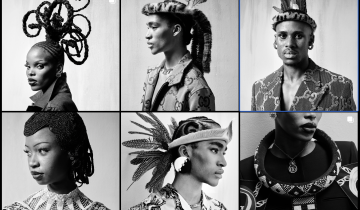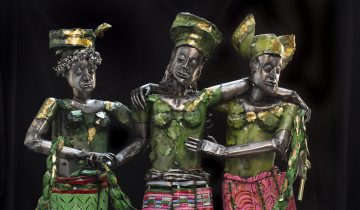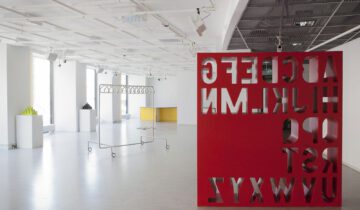Art Investments in Portfolios: A Second-Best Solution? Insights from Melnik and Plaut
In the rarefied circles where the worlds of high finance and fine art intersect, investment portfolios are not merely repositories of stocks and bonds but canvases awaiting a masterful touch. The allure of art as an investment has captivated not just collectors but also astute investors who seek to diversify their holdings with assets that offer both aesthetic pleasure and potential financial return. The transformation of the art market over the past few decades is nothing short of remarkable—a journey from the hushed auction rooms of the 1970s, where annual sales hovered around a modest $115 million, to the exuberant global marketplace of the early 21st century, boasting transactions exceeding $2 billion.
This metamorphosis is fueled by a confluence of factors: the globalization of art galleries, the democratization of auctions through online platforms, and a voracious appetite among the affluent for cultural capital. Masterpieces once confined to the walls of the elite now frequently change hands, their provenance and prices meticulously documented and disseminated. In this vibrant milieu, art has emerged not merely as a collector’s passion but as a serious contender in the realm of investment assets.
Yet, amidst the glitter and glamour, a question lingers with the persistence of a shadow at dusk: Does art truly hold its own as a component of a well-balanced investment portfolio? Can the enigmatic smile of a Modigliani or the bold strokes of a Pollock translate into the cold, hard metrics of financial returns? It is this intricate dance between art and economics that Arie L. Melnik and Steven E. Plaut, esteemed professors at the University of Haifa, sought to choreograph in their insightful 2008 paper, “Art as a Component in Investment Portfolios.”
Melnik and Plaut delve into the labyrinthine corridors of the art market with the acumen of seasoned financiers and the curiosity of passionate connoisseurs. Their study spans a more extensive timeline than previous research, casting a wide net over the fluctuations and trends that have shaped art investment returns over the years. They pose a nuanced thesis: While art may not traditionally feature in the pantheon of optimal investment assets, it assumes a more prominent role under specific, constrained conditions—what they aptly term a “second-best” solution.
We shall embark on an exploration of their findings, weaving through statistical analyses and portfolio theories with the finesse of a brushstroke on a canvas. We aim to illuminate the circumstances under which art not only enriches the soul but also enhances the performance of an investment portfolio. Through the lens of Melnik and Plaut’s research, we will consider the strategic inclusion of art as an asset class, particularly when traditional avenues are curtailed, and ponder its implications for the discerning investor who stands at the crossroads of passion and prudence.
| Asset Class | Mean Return | Median Return | Standard Deviation | Maximum Return | Minimum Return | Risk-Adjusted Return |
|---|---|---|---|---|---|---|
| Art Market Research Index (AMRI) | 3.6% | 3.1% | 10.4% | 23.1% | -21.2% | 0.35 |
| Large Cap U.S. Stocks (LCUS) | 15.5% | 16.9% | 13.7% | 33.4% | -11.7% | 1.13 |
| Small Cap U.S. Stocks (SCUS) | 18.6% | 21.6% | 16.2% | 42.8% | -22.2% | 1.15 |
| Long-Term Corporate Bonds (LRCB) | 9.3% | 10.1% | 10.7% | 30.7% | -8.1% | 0.87 |
| Long-Term Government Bonds (LRGB) | 9.8% | 8.7% | 11.7% | 32.7% | -9.2% | 0.84 |
| U.S. Treasury Bills (USTB) | 6.6% | 5.8% | 2.8% | 13.9% | 0.3% | 2.36 |
The Growing Appeal of Art as an Investment
In the ever-evolving tapestry of global finance, few threads have woven themselves as intriguingly as the ascent of art as a coveted investment vehicle. The latter part of the 20th century witnessed a renaissance—not of artistic creation per se, but of art’s metamorphosis into a formidable asset class. The numbers tell a tale as vibrant as any Impressionist masterpiece: from a modest $115 million in international art auction sales in 1970 to a staggering $2.2 billion by the turn of the millennium.
This exponential growth is no mere happenstance but the result of a confluence of transformative factors. The globalization of major art galleries has bridged continents, bringing the avant-garde of New York within arm’s reach of collectors in Shanghai. Public auctions have shed their exclusivity, becoming spectacles that rival red-carpet galas, while the proliferation of meticulously curated catalogues has demystified the esoteric world of art, rendering it accessible to a broader, more financially motivated audience.
Moreover, the art market’s newfound transparency—fueled by digital platforms and real-time price dissemination—has imbued it with a liquidity once thought unattainable for such a nuanced asset. Major exhibitions now dot the global calendar, each a nexus where wealth, culture, and ambition converge. In this vibrant milieu, art has emerged not merely as a collector’s passion but as a serious contender in the realm of investment assets.
Consider the meteoric appreciation of Van Gogh’s “Irises.” Purchased in 1948 for a mere $84,000—a princely sum at the time—it fetched an astonishing $53.9 million at auction in 1987. This singular transaction not only enriched its seller but also ignited imaginations across the investment community, showcasing an annual real return of 12.4% over nearly four decades. Such figures, outpacing many traditional investments, have fueled narratives of art as a hedge against market volatility, a tangible asset immune to the caprices of economic downturns.
The media, ever eager to anoint the next golden goose, has amplified this allure. Headlines proclaim art as the sophisticated sanctuary for capital, a “globally recognizable and in-demand” commodity that thrives even as stock markets stumble. Whispered conversations in the oak-paneled rooms of private banks often touch upon the tax advantages—complex and varied—that art investments may confer, adding another layer to its multifaceted appeal.
Yet, amidst this fervor, one must pause to ponder: Is the canvas truly mightier than the stock certificate? Or is this a gilded mirage, an artful illusion crafted by those who stand to benefit from the influx of capital into the art market?
Historical Perspective on Art in Investment Portfolios
To navigate these questions, we must first traverse the annals of economic scholarship, where art’s role as an investment has long been a subject of contemplation and debate. The venerable works of Frey and Pommerehne, dating back to 1989, offer a sobering counterpoint to the exuberance of contemporary art investment narratives. Their exhaustive examination of over three centuries of art prices concluded that the real return on paintings hovered around a modest 1.5%, lagging behind the returns of traditional financial assets.
Similarly, the economist William Baumol, in his seminal 1986 analysis, likened the art market to a “floating crap game,” characterized by randomness and unpredictability. He posited that while individual artworks might soar in value, the average returns across the market failed to match the performance of equities or bonds. Baumol’s metaphor underscores a critical consideration: the art market, for all its allure, may not adhere to the rational expectations that underpin conventional investment theory.
Subsequent studies have echoed these findings. Research by Renneboog and Van Houtte in 2002 reinforced the notion that art should constitute, at most, a minuscule portion of an optimized investment portfolio—if included at all. The consensus among these scholars is clear: while art possesses undeniable cultural and aesthetic value, its financial performance, when measured against more prosaic assets, often falls short.
Yet, a tantalizing thread emerges when one examines the correlation—or lack thereof—between art and other asset classes. Ginsburgh and Jeanfils, in their 1995 study, highlighted the low correlations between art prices and traditional financial markets. This suggests that art could serve as a diversification tool, smoothing portfolio volatility by introducing an asset that moves to a different rhythm than stocks or bonds.
However, the practical implementation of this theory is fraught with complexities. The art market’s opacity, illiquidity, and high transaction costs present formidable barriers. Unlike the fluid markets for equities or commodities, where information is abundant and transactions instantaneous, art deals often unfold behind closed doors, with prices influenced by factors as intangible as an artist’s reputation or the whims of collectors.
Melnik and Plaut’s Study: Objectives and Methodology
Into this intricate mosaic step Arie L. Melnik and Steven E. Plaut, wielding the analytical tools of economists and the inquisitive spirit of explorers charting uncharted territory. Their study seeks to peel back the layers of assumption and conjecture that shroud the role of art in investment portfolios. By extending the time horizon beyond previous research, they aim to capture the long-term dynamics that influence art’s performance as an asset class.
Central to their methodology is the utilization of the Art Market Research (AMR) index—a comprehensive barometer of art prices that encompasses a broad spectrum of artists and movements. This index, respected and referenced by industry stalwarts like Christie’s and Sotheby’s, as well as tax authorities on both sides of the Atlantic, offers a rare window into the art market’s inner workings.
Melnik and Plaut meticulously assembled a dataset spanning from 1976 to 2003, capturing over 100,000 sales of paintings by approximately 100 artists. This period, rich in economic cycles and market evolutions, provides fertile ground for their analysis. By juxtaposing the AMR index against traditional asset classes—large-cap and small-cap U.S. stocks, long-term corporate and government bonds, and U.S. Treasury bills—they constructed a comprehensive framework for evaluating art’s potential role in portfolio optimization.
Employing sophisticated portfolio optimization algorithms, they explored various scenarios, adjusting for factors such as risk tolerance and asset availability. Their approach is both rigorous and nuanced, acknowledging the idiosyncrasies of the art market while grounding their analysis in established financial principles.
Key Findings from the Study
The results of Melnik and Plaut’s inquiry are as enlightening as they are counterintuitive. In portfolios where all asset classes are readily available, art fails to secure a position. The optimization algorithms, unswayed by the romantic allure of a Monet or the boldness of a Pollock, assign art assets a weight of zero—or even suggest short positions if unconstrained by practical considerations. This outcome aligns with the prevailing academic consensus: in an optimal portfolio, art’s contribution to performance is negligible.
However, the plot thickens when Melnik and Plaut introduce constraints—what they refer to as “second-best” scenarios. By systematically excluding certain asset classes, such as Treasury bills or large-cap stocks, they simulate conditions where investors are limited in their choices, whether by regulatory frameworks, ethical considerations, or market barriers.
Under these constrained circumstances, art emerges from the shadows to claim a more prominent role. The omission of Treasury bills, for instance, results in art assets comprising 4% of the optimized portfolio—a significant allocation given art’s previous exclusion. Similarly, when large-cap stocks are removed from consideration, art’s weight increases to 7%.
These findings suggest that art can function as a substitute asset, filling gaps left by the absence of traditional investment vehicles. Its low correlation with other asset classes becomes an asset rather than a liability, providing diversification benefits that enhance portfolio performance under specific conditions.
Yet, this is not an unqualified endorsement of art as an investment panacea. The scenarios where art adds value are particular and contingent upon constraints that may not apply to all investors. Moreover, the practical challenges of investing in art—the need for expertise in valuation, the illiquidity of the market, and the high transaction costs—remain formidable obstacles.
| Asset Class | AMRI | LCUS | SCUS | LRCB | LRGB | USTB |
|---|---|---|---|---|---|---|
| AMRI | 1.000 | 0.166 | -0.329 | -0.084 | 0.023 | 0.309 |
| LCUS | 0.166 | 1.000 | 0.388 | 0.313 | 0.335 | 0.088 |
| SCUS | -0.329 | 0.388 | 1.000 | 0.018 | -0.043 | 0.092 |
| LRCB | -0.084 | 0.313 | 0.018 | 1.000 | 0.953 | 0.031 |
| LRGB | 0.023 | 0.335 | -0.043 | 0.953 | 1.000 | 0.085 |
| USTB | 0.309 | 0.088 | 0.092 | 0.031 | 0.085 | 1.000 |
Implications for Investors
For the discerning investor, Melnik and Plaut’s study offers both caution and opportunity. It underscores the importance of context in portfolio construction; what is optimal in theory may be unattainable or suboptimal in practice due to various constraints.
Institutional investors, such as pension funds or endowments, often face regulatory or policy-imposed limitations on the assets they can hold. In such cases, art may present a viable alternative to fill strategic gaps, providing diversification and potential returns that align with their investment mandates.
Private investors, particularly high-net-worth individuals with a penchant for the arts, might find in these findings a justification for integrating their passion into their financial strategy. However, they must do so with eyes wide open, cognizant of the complexities and risks inherent in the art market.
Strategically, investors should consider art not as a replacement for traditional assets but as a complement under specific circumstances. Due diligence is paramount. This includes engaging experts for valuation, understanding the nuances of provenance and authenticity, and being prepared for the long-term horizon often required to realize returns in the art market.
In essence, the inclusion of art in an investment portfolio should be a deliberate decision, informed by both quantitative analysis and an appreciation of the intangible factors that influence art’s value.
| Asset Class | Portfolio Weight |
|---|---|
| Art Market Research Index (AMRI) | 0.00% |
| Large Cap U.S. Stocks (LCUS) | 15.94% |
| Small Cap U.S. Stocks (SCUS) | 30.62% |
| Long-Term Corporate Bonds (LRCB) | 0.00% |
| Long-Term Government Bonds (LRGB) | 16.84% |
| U.S. Treasury Bills (USTB) | 36.60% |
Expected Return: 12.86% | Volatility: 7.35% | Sharpe Ratio: 1.07
| Scenario | AMRI | LCUS | SCUS | LRCB | LRGB | USTB | Expected Return | Volatility | Sharpe Ratio |
|---|---|---|---|---|---|---|---|---|---|
| Without U.S. Treasury Bills | 4.03% | 16.93% | 36.26% | 0.00% | 42.78% | 0.00% | 13.71% | 8.20% | 1.06 |
| Without Long-Term Government Bonds | 0.00% | 23.27% | 31.94% | 21.76% | 0.00% | 23.03% | 13.09% | 7.96% | 1.02 |
| Without Small Cap U.S. Stocks | 0.00% | 40.11% | 0.00% | 0.00% | 31.52% | 28.37% | 11.18% | 7.27% | 0.85 |
| Without Large Cap U.S. Stocks | 6.99% | 0.00% | 36.36% | 0.00% | 43.94% | 12.71% | 12.16% | 6.88% | 1.04 |
Note: This article draws upon the research of Arie L. Melnik and Steven E. Plaut in their paper “Art as a Component in Investment Portfolios,” providing insights into the nuanced role art can play within investment strategies, particularly under constrained conditions.





 No products in the basket.
No products in the basket.